Tèrra, which hasZero waste and sustainable restaurant as its slogan, is interesting as a restaurant in its own right – or rather as an "urban trattoria." Valerio Serino opened it in September 2017 with his wife Lucia De Luca in the neighbourhood of Østerbro in Copenhagen. This is the Nordic arrival point of the Roman chef, born in 1986 and previously working at Alitalia while his current career is in the kitchen, after he was charmed by cooking in North Europe and indeed his CV includes experience in other restaurants in the Danish capital, including Amass and Kanalen.
He says: «Here we must work to be accepted as we are, that is to say a new image of Italian cuisine which is more than pasta, it’s a mix of life experiences». Zero waste and sustainable restaurant is the plus that Tèrra wants to present compared to classic Italian fine dining abroad; or rather this is the philosophy of all of Serino’s work: «We decided to define ourselves as a zero waste restaurant. And we have managed to make this commitment into something real. In the new menu we use all of the food scraps, we maximise their use in multiple steps. In the end, only a little fibre is left», which becomes compost for the small vegetable garden they own.
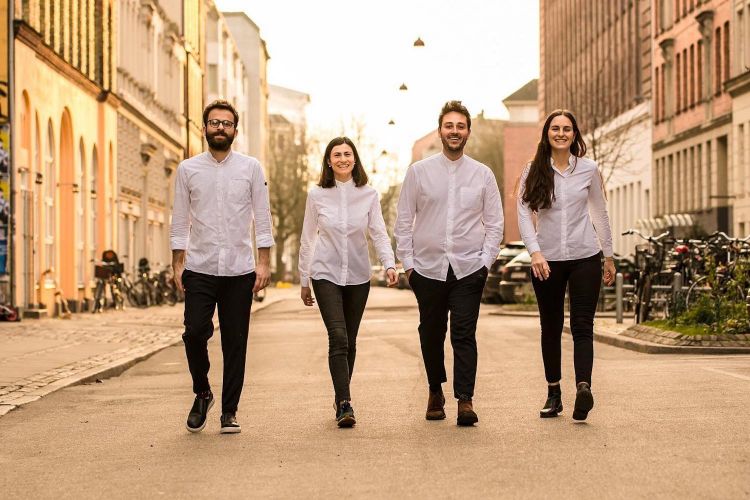
The team at Tèrra: in the middle, Valerio Serino and wife Lucia De Luca
Some examples? Lemon: «It’s one of the few things we buy from Italy, together with extra virgin olive oil and some vegetables. If possible, we only use local products. With the juice we make syrups and sorbets; with the zest we make oil; the rest we use to make a brine aromatised with lemon: this way we use 99% of the fruit. The rest is fibres». The same with asparagus: «With the scraps we make a crumble, with the rest of the scraps a miso with lemon (also made from the scraps of lemon) aromatised with green asparagus, which we serve with calamari».
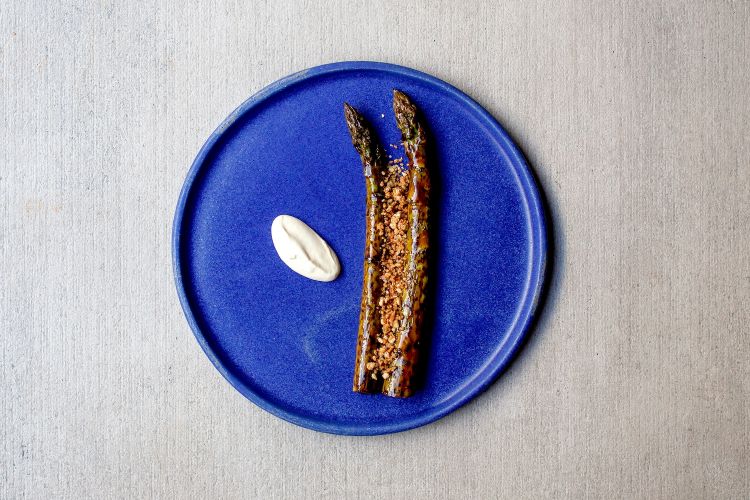
Asparagus, asparagus crumble, hazelnut butter
The emblem of this philosophy in the kitchen and of this total sustainability is a new offer. «We take garfish, a poor fish. The filet becomes the protagonist of a course. And the scraps? The tail, which is very tasty, becomes the focus of a delicious dish with oriental nuances thanks to a glazing that tastes of umami, with soy sauce. We add a broth made with the head and bones of the same fish, which becomes a jus aromatised through infusion with our katsuobushi matured one year and made with mackerel bones preserved in salt. Then there’s a brine aromatised with lemon», the same mentioned above, prepared with the scraps from other recipes with the citrus fruit.
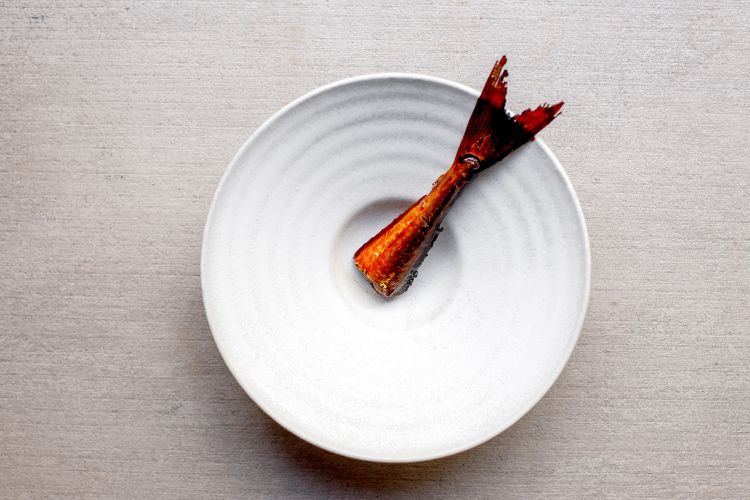
Preparing the garfish tail
The network of ways to recuperate the ingredients is not over. We’ve seen how he uses the garfish tail, which is a scrap. But what about its noble part, the filet? «It’s marinated in a solution of vinegar aromatised with dried tomato and oregano». We don’t throw away the marinating juice, after its initial use. First step: «We extract the scraps of tomato and oregano and make a base of tomato which we serve with the garfish filet». Second step: «even the scraps from the extraction of the juice are used again, they’re dehydrated to make tomato chips», served as a snack.
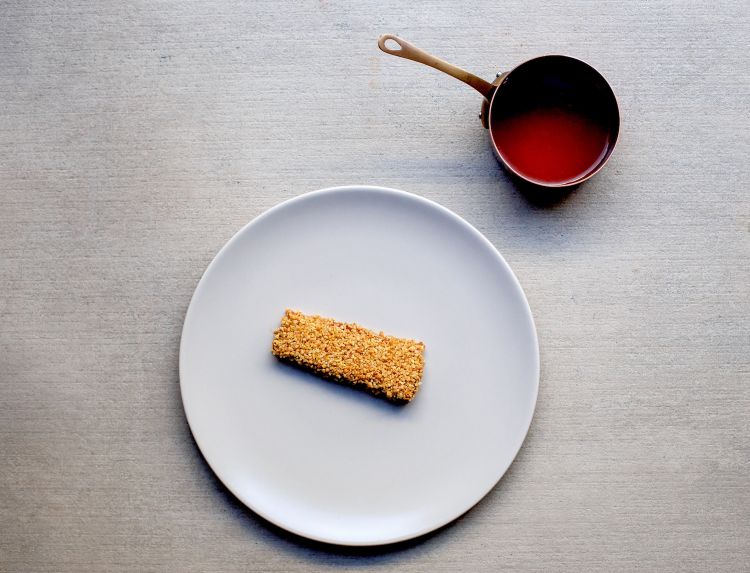
Preparing the garfish filet with tomato jus made from the scraps of the marinating juice prepared for the same filet
An ongoing process of scrap reuse until everything is finished, «only the fibres are left, which we use as compost to grow our salads». The overall message: «Make people aware of these themes through a good dish, yet simple and poor. You need constant research, looking at the future with respect for products and enhancing their nature through contemporary techniques mixed with ancestral systems».
Does being in Copenhagen help with taking such choices in the kitchen? «It surely does. The area – due to climate – has always been poor of food resources. Hence we had to develop different techniques to preserve them fully, like brine or vinegar. We’re making use of this and thus recuperate these ancestral traditions, putting them to the test and comparing them to those of different cultures».
Serino ends: «These systems often have much in common. What differs here is the context: here in Denmark there’s a poor culinary culture, the boom is only recent and has allowed to rediscover old techniques. Italy is instead the country of food abundance, so we often neglect studying methods to recuperate that were perhaps common among our grandmothers and great grandmothers». A few months ago, Serino was invited in Apulia at
Ego - Enogastro Orbite, a food and wine festival in Taranto, «I thought of ways to use olive scraps, but not to make pomace oil». So he suggested to make some powder instead, to use as a seasoning for pasta. «I don’t know if it’s feasible. What’s important is that people think about it. We must open our eyes for the next generations».
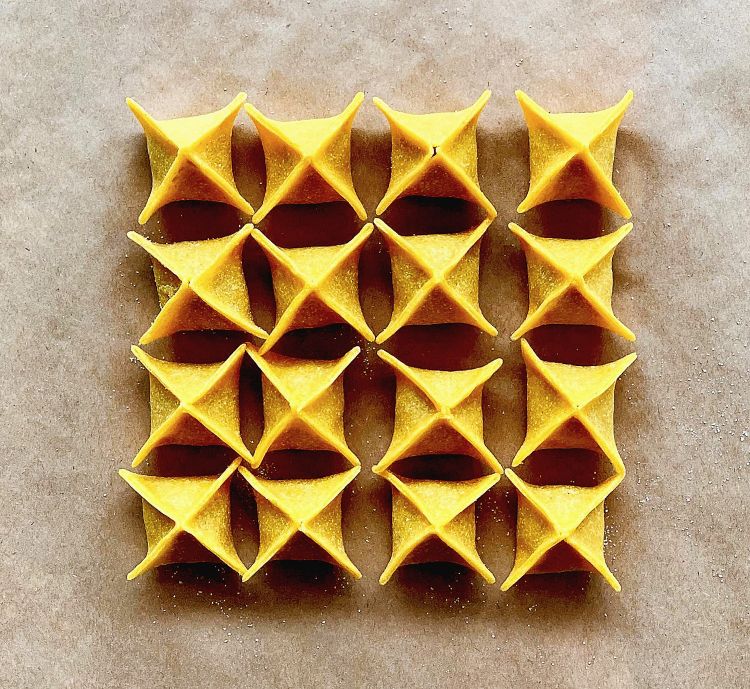
Fresh pasta from Serino’s lab close to the restaurant – it’s called Il Mattarello "Artisan And Organic Pasta"